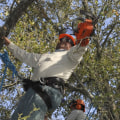Pruning trees is an essential maintenance practice that promotes healthy growth, improves tree structure, and enhances the aesthetic appeal of your landscape. However, the cost of tree pruning can vary widely based on several factors, including tree size, type, location, and the complexity of the job. Understanding these cost factors can help homeowners budget appropriately and ensure they receive quality service. On average, the cost of pruning trees ranges from $200 to $800 per tree, but several elements can influence this price range.
Factors Influencing the Cost of Pruning
Tree Size and Height
One of the most significant factors affecting the cost of tree pruning is the size and height of the tree. Larger and taller trees require more time, effort, and specialized equipment to prune safely and effectively. For instance, pruning a small ornamental tree that is less than 30 feet tall might cost around $200 to $400, while a larger tree exceeding 50 feet in height can cost $500 to $1,200 or more. The increased cost is due to the additional labor and potential need for climbing equipment or lift systems to reach higher branches.
Tree Type and Condition
The type of tree also plays a crucial role in determining the pruning cost. Some tree species have denser foliage or more complex branching patterns, making them more challenging to prune. For example, hardwood trees like oaks and maples may require more effort and time compared to softer wood trees like pines or spruces. Additionally, the tree's health and condition are important considerations. Trees that are diseased, dead, or have extensive damage may need special handling, which can increase the overall cost.
Location and Accessibility
The tree's location and accessibility can significantly impact the cost of pruning. Trees situated near power lines, buildings, or other structures pose higher risks and require more careful planning and execution. In such cases, professional tree services may need to employ additional safety measures, which can increase labor costs. Similarly, trees located in hard-to-reach areas, such as steep slopes or enclosed spaces, may require specialized equipment and more labor, leading to higher costs.
Pruning Objectives
The specific objectives of pruning also influence the cost. Routine maintenance pruning to remove dead or diseased branches and improve tree health is generally less expensive than more complex pruning tasks. For example, structural pruning to shape young trees, aesthetic pruning to enhance appearance, or crown reduction to manage tree size can involve more detailed work and precision, increasing the overall cost. Emergency pruning, such as removing hazardous branches after a storm, can also be more expensive due to the urgent nature and potential danger involved.
Labor and Equipment
The labor and equipment required for the job play a significant role in determining the cost of tree pruning. Professional tree services like Orellana Tree Service invest in skilled arborists and specialized equipment to ensure safe and effective pruning. The use of cranes, bucket trucks, chippers, and other advanced tools can increase the cost but also ensure high-quality work. Additionally, the number of crew members needed for the job and the time required to complete it are factored into the final price.
Regional Differences
Regional differences can also affect the cost of tree pruning. Prices may vary based on the local cost of living, availability of skilled labor, and regional tree species. Urban areas with higher living costs and greater demand for tree services may have higher prices compared to rural areas. It's important to obtain multiple quotes from local tree service providers to understand the pricing trends in your area and make an informed decision.
Additional Costs and Considerations
Debris Removal
Debris removal is an additional cost that homeowners should consider. Pruning generates a significant amount of green waste, including branches, leaves, and sometimes larger tree sections. Professional tree services often include debris removal in their quotes, but it's essential to confirm this beforehand. If debris removal is not included, you may need to pay extra for hauling and disposal services.
Permits and Regulations
In some areas, pruning large trees or removing significant branches may require permits or adherence to specific regulations. Obtaining these permits can involve additional costs and time. It's important to check with local authorities or your tree service provider to ensure compliance with any legal requirements.
Conclusion
The average cost of pruning trees can vary widely depending on several factors, including tree size, type, location, pruning objectives, and regional differences. On average, homeowners can expect to pay between $200 and $800 per tree, but more complex jobs can cost significantly more. By understanding these cost factors and working with reputable professionals, homeowners can ensure their trees receive the proper care and maintenance while staying within their budget. Regular pruning not only enhances the health and appearance of trees but also contributes to the safety and beauty of your landscape.


